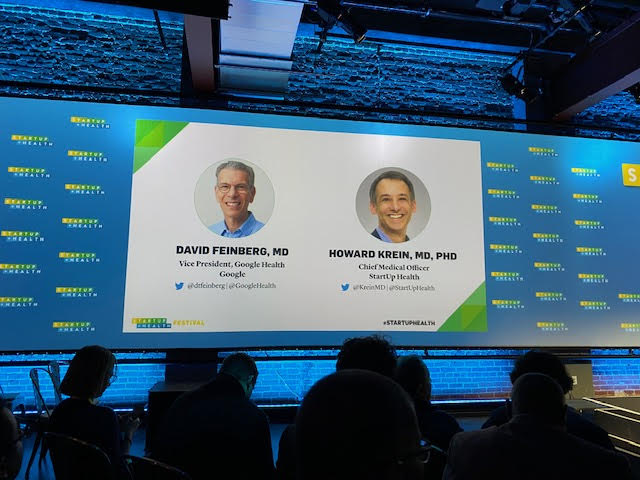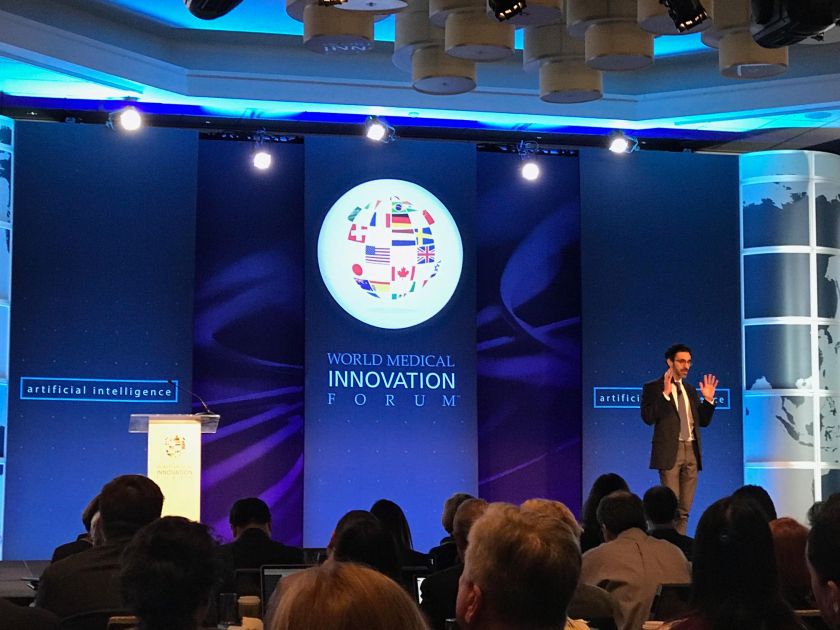The JP Morgan Health Conference was a great week in regards to meetings in the digital health and biotech ecosystem. As mentioned in Modern Healthcare, it’s the week where one can make enough contacts to hold over for a year! Well, that’s a bit of an exaggeration. It’s more like for the rest of the quarter.
Spent some of mine at the adjacent Startup Health Festival, side events, corporate meetings and receptions. A two day festival, it was a great atmosphere – a mixture of startups at various stages, corporates, VCs and industry leaders.
The theme was moonshot which is very timely and it was pretty clear. Google Health’s VP David Feinberg reinforced on the main stage that theme in a talk where he discussed the formation of Google Health, a trinity of Deepmind, Google Brain, Nest Home (health features). He spent some time talking about the positive relationship between creatinine and cardiac rehabilitation, partnering with the VA and correcting the misinformation around the Ascension Health project.

Meanwhile in the connect lounge, I moved swiftly from each 20 minutes meeting (think musical chairs), from one founder/CEO to another with market traction from clinical products such as AI nursing assistants, diabetes prevention programs, remote monitoring and med device safety analytics. I soon realized how difficult it must be in a maturing digital health market for founders to show differentiation.
There was a dearth of products targeting the operational side of healthcare (a dark horse) such as billing, claims and back end operations for payers and large health systems. On reflection, this made sense as the JP Morgan conference as a whole leans more pharma R&D drug discovery and biotech. As machine learning applications in health care solve pharma issues around clinical trials, personalized medicine and patient therapeutic interventions, the lines are beginning to blur with digital health and market access concerns.


